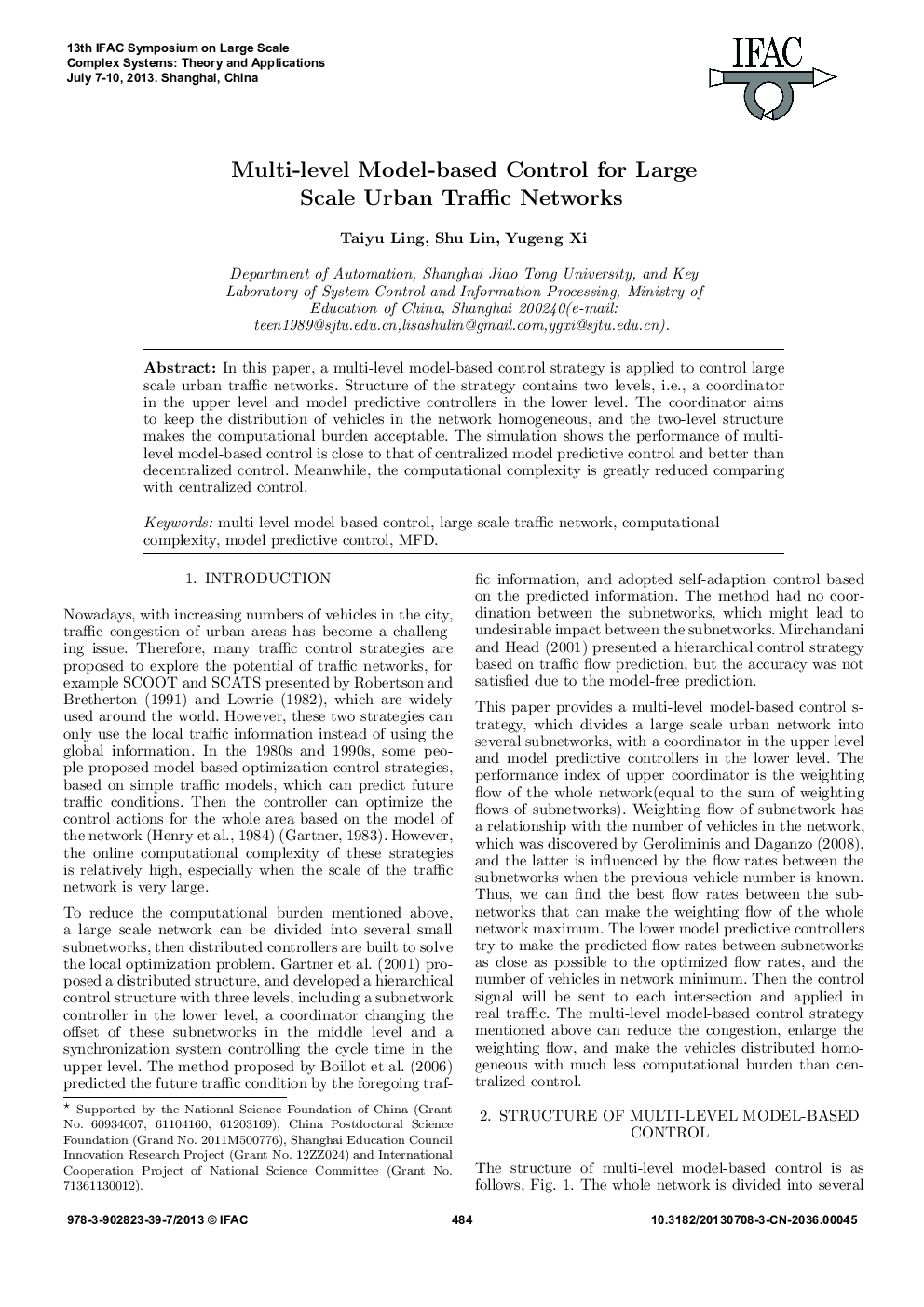| Article ID | Journal | Published Year | Pages | File Type |
|---|---|---|---|---|
| 712722 | IFAC Proceedings Volumes | 2013 | 6 Pages |
Abstract
In this paper, a multi-level model-based control strategy is applied to control large scale urban traffic networks. Structure of the strategy contains two levels, i.e., a coordinator in the upper level and model predictive controllers in the lower level. The coordinator aims to keep the distribution of vehicles in the network homogeneous, and the two-level structure makes the computational burden acceptable. The simulation shows the performance of multilevel model-based control is close to that of centralized model predictive control and better than decentralized control. Meanwhile, the computational complexity is greatly reduced comparing with centralized control.
Related Topics
Physical Sciences and Engineering
Engineering
Computational Mechanics
